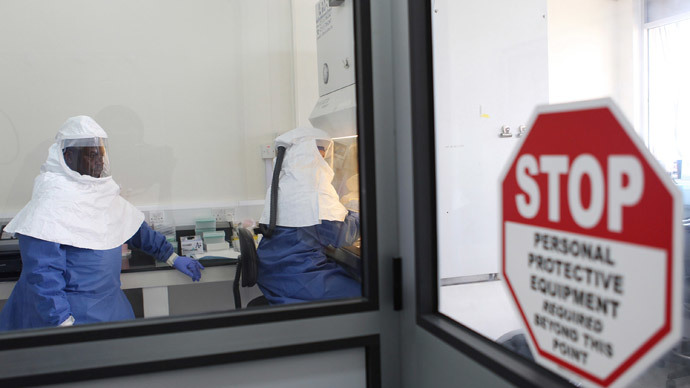The FBI is investigating several vials of smallpox that were found in an unused laboratory storage room on the National Institutes of Health campus in Bethesda, Maryland. The Centers for Disease Control and Prevention has taken the vials for testing.
Only July 1, employees found the box of vials when they were cleaning out the storage room in preparation to move the lab, which has been operated by the Food and Drug Administration since 1972, over to the FDA’s main campus in nearby Silver Spring.
The six freeze-dried vials were labeled as containing variola, which the CDC says is “the severe and most common form of smallpox.” Another 10 vials were also found, but the labels on them were unclear as to what they contained, Dr. Steven Monroe, who directs the CDC’s division of high consequence pathogens and pathology, told ABC News.
No one knows how long the smallpox has been in the storage area, which is kept at 5 degrees Celsius. But the boxes they were stored in may date back to the 1950s, CDC spokesman Tom Skinner said.
On Monday, the CDC arrived at the NIH campus to remove the specimens to their high-containment facility in Atlanta, where overnight testing in the Biosafety Level-4 (BSL-4) Lab confirmed the presence of smallpox. The Georgia-based agency is currently performing additional testing to discover whether the materials inside the vials are viable. This testing could take up to two weeks, the CDC said in a statement.
How the vials are stored and in what form are the key to whether the variola is viable, Dr. Micah Krichevsky, a former NIH scientist told RT. “As long as they are in a sealed vial, it doesn’t matter as long as the integrity is not affected,” he said.
“There is no evidence that any of the vials labeled variola has been breached," the CDC said.
However, Krichevsky noted, it takes a not-insignificant amount of work to keep a virus viable, unlike bacteria. “No one has tried that experiment with smallpox, though,” he said. He believes the vials are likely dead, though he stressed that there is no way of knowing without the CDC test results.
Smallpox is one of the deadliest diseases in history, killing about 30 percent of its victims and more than 300 million people worldwide in the 20th century alone. It is also the only human disease to have been eradicated by vaccination, according to The College Physicians of Philadelphia’s History of Vaccines. The last case in the US was in 1949, while the last known wild case of smallpox occurred in Somalia in 1977.
According to a 1979 international agreement, there are only two official World Health Organization (WHO)-designated repositories for smallpox: CDC in Atlanta, Georgia and the State Research Centre of Virology and Biotechnology (VECTOR) in Novosibirsk, Russia. The WHO oversees the inspection of these smallpox facilities and conducts periodic reviews to certify the repositories for safety and security, according to the CDC.
Because of fears of variola’s potential use as for bioterrorism, it (and other such deadly agents) are supposed to be kept in BSL-4 labs. The storage area where the vials were found does not meet those standards, according to NPR.
The CDC’s Division of Select Agents and Toxins is working with the FBI to investigate how the mysterious vials came to be located in the FDA lab… and potentially forgotten about for decades. “We’re trying to find out,” Skinner said to the Washington Post. “This certainly is an unusual event.”
Krichevsky said the vials may have been forgotten about long before the lab was turned over to the FDA. “Someone in a safety suit would have put it in a locked, very tight container” to move the box containing the vials, he said. “Just moving it from one side of the room to another, there are a whole set of procedures to follow.”
Once the CDC has finished its testing by late July, the variola virus will be destroyed. “WHO has been invited to participate in the investigation,” the agency said. “If viable smallpox is present, WHO will be invited to witness the destruction of these smallpox materials, as has been the precedent for other cases where smallpox samples have been found outside of the two official repositories.”
Biosafety personnel at NIH have not identified any infectious exposure risk to lab workers or to the public.
The smallpox discovery comes just three weeks after the US government announced that as many as 84 scientists working at the CDC in Atlanta may have been exposed to anthrax bacteria after failing to follow safety procedures.

